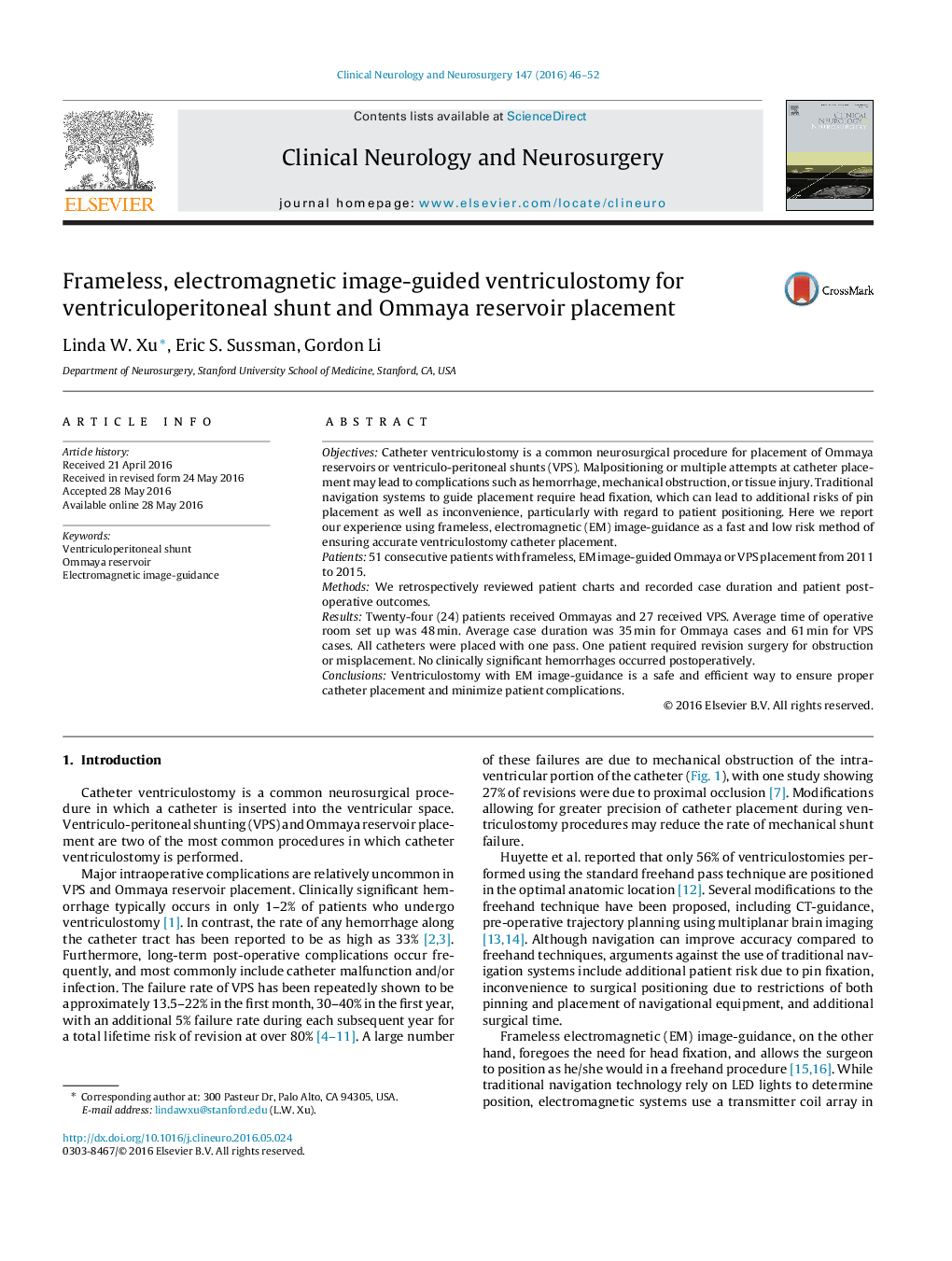| Article ID | Journal | Published Year | Pages | File Type |
|---|---|---|---|---|
| 6006350 | Clinical Neurology and Neurosurgery | 2016 | 7 Pages |
â¢Frameless, electromagnetic (EM) image-guidance increases ventriculostomy accuracy.â¢The use of EM guidance is possible with reasonable set up and operative times.â¢Fewer revisions are needed in a series of patients using EM image guidance.â¢EM guidance provides an accurate and fast way to place ventriculostomy and improve patient outcome.
ObjectivesCatheter ventriculostomy is a common neurosurgical procedure for placement of Ommaya reservoirs or ventriculo-peritoneal shunts (VPS). Malpositioning or multiple attempts at catheter placement may lead to complications such as hemorrhage, mechanical obstruction, or tissue injury. Traditional navigation systems to guide placement require head fixation, which can lead to additional risks of pin placement as well as inconvenience, particularly with regard to patient positioning. Here we report our experience using frameless, electromagnetic (EM) image-guidance as a fast and low risk method of ensuring accurate ventriculostomy catheter placement.Patients51 consecutive patients with frameless, EM image-guided Ommaya or VPS placement from 2011 to 2015.MethodsWe retrospectively reviewed patient charts and recorded case duration and patient post-operative outcomes.ResultsTwenty-four (24) patients received Ommayas and 27 received VPS. Average time of operative room set up was 48Â min. Average case duration was 35Â min for Ommaya cases and 61Â min for VPS cases. All catheters were placed with one pass. One patient required revision surgery for obstruction or misplacement. No clinically significant hemorrhages occurred postoperatively.ConclusionsVentriculostomy with EM image-guidance is a safe and efficient way to ensure proper catheter placement and minimize patient complications.
